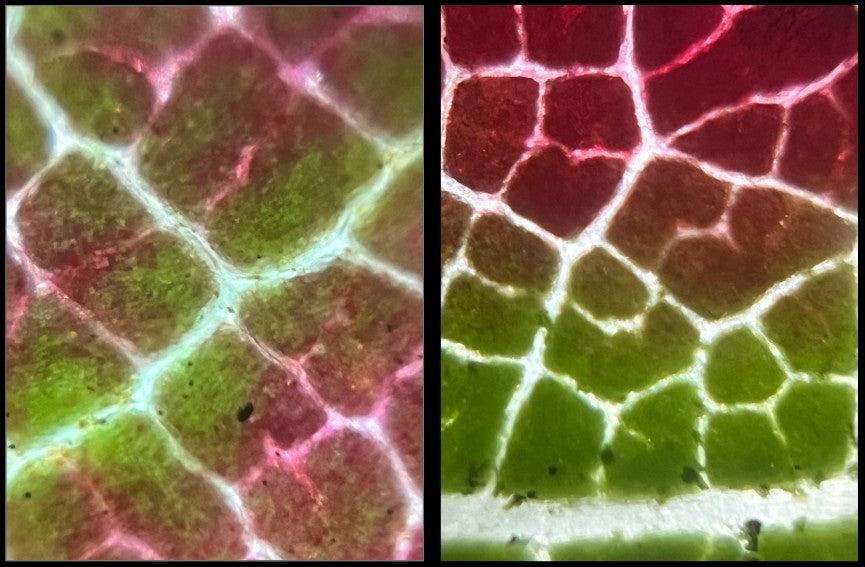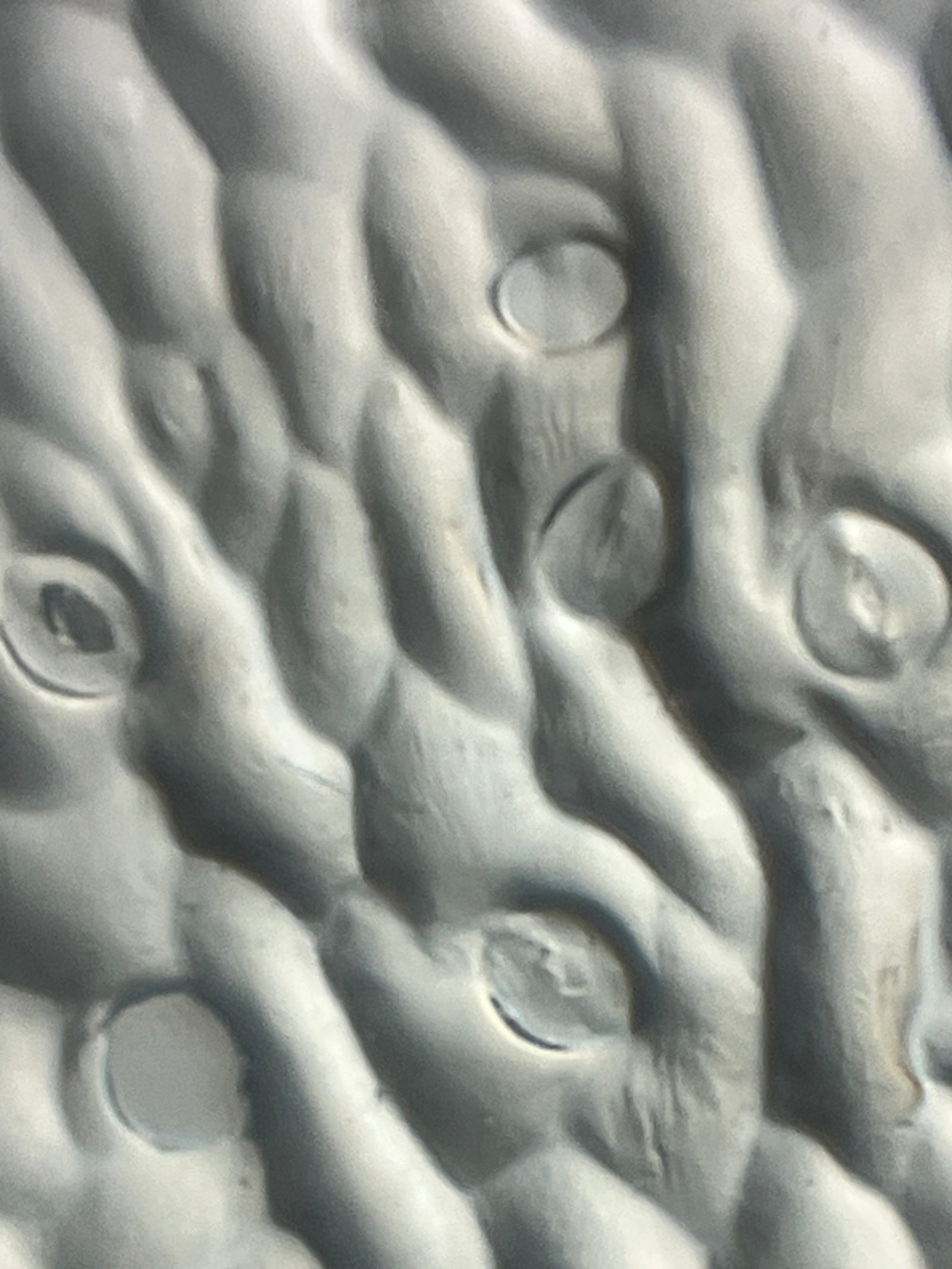Summary:
-
Benefits of using Foldscopes to do scientific investigations
-
How to begin a longitudinal garden study with Foldscopes
-
Monthly series to support your project

Figure 1. Foldscope 2.0 and Foldscope Mini
(Photo Credit: Holly A. Stuart)
Question:
How do you plan a Foldscope based longitudinal garden study?

Figure 2. Garden plan for the longitudinal study
(Photo Credit: Holly A. Stuart)
Foldscopes are the perfect tool for longitudinal garden studies. They are portable, versatile, and affordable enough to put one in the hands of everyone involved in the project! Imagine each student doing microscopy, contributing to the group, and taking ownership of their learning. Working outdoors in a garden for weeks or months at a time allows students to immerse themselves in the interdisciplinary nature of science. This is engaging, hands on, student led, meaningful learning at its best.

Figure 3. Garden journals for tracking data
(Photo Credit: Holly A. Stuart)
This blog will be your guide to planning your classroom, outreach, or citizen science project. I have broken it down into 8 steps. Let’s get started!
1. Purchase Your Foldscopes
- A basic classroom set will provide you with everything you need to conduct this project. They come in groups of 20, so get enough sets for each of your students to have their own Foldscope. It is up to you if you want to include additional accessories for your students. Some accessories to consider are:
- Lens Kit - This will allow your students to have multiple magnification options. This video talks about the different Foldscope lenses. Watch it and decide if these are options you want for your students.
- LED Light Module - You can view microorganisms and take pictures with a Foldscope using ambient light, but having a uniform light source makes imaging easier for students. And the 2.0 LED Light Module lets you view in brightfield, darkfield, and reflective lighting conditions! This video can help you decide if you want the additional features that come with the light module.
- Accessory Packs - This is beneficial if you are going to be doing the majority of your sample and data collection outdoors (which you probably will!). An accessory pack has a variety of tools to help with sample collection, a field guide to identify common microbes, and everything stays organized in the zippered pouch. And, each pack comes with an LED light! The pack can also be used for storing your Foldscope.
2. Learn to Use Your Foldscope
- There are tutorials and videos available on the Foldscope website and YouTube channel. We also offer official Foldscope training to help you learn how to use all of the Foldscope tools and increase your confidence for teaching these skills to others. Reach out to us at training@foldscope.com for more details on training.
3. Choose a Research Question
- What do you want your students to learn? What questions do your students ask when you teach about ecosystems, plant life cycles, weather patterns, or soil chemistry? Do you know what microbes are in your soil? What are the things that interest you about gardening that you would like to know more about? Take your time thinking about the question because it will determine the data you collect, the timeline for the study, and how you choose to communicate your findings once the study is complete.
4. Sample Collection Site
- Is your site safe and easy to access? Is there enough space for your students to spread out to do their work?
- What do you need to do to prepare the site? How much time and materials do you need to prepare the site? Who will help you with the preparation?
- If this project is for an outreach or citizen science program, provide participants with a vetted list of safe spaces they can access to make observations and collect samples and data.

Figure 4. A picture of the garden plot to be used for the longitudinal study
(Photo Credit: Holly A. Stuart)
5. Microscopic and Macroscopic Observations
-
These will vary depending on your research question(s). Your observations may include (but aren’t limited to):
- Soil Microbiome: bacteria, fungi, and protists
- Soil Structures: layer composition, particle aggregation, and microbial populations within soil layers
- Plant Structures: seeds, root hairs, stems, leaves (whole leaves, cells, trichomes, stomata, chloroplasts), flowers (whole flower, petal cells, pollen, stamen, pistil), and fruit (skin and flesh)
- Pollinators: whole animals, wings, legs, antennae, eyes, and exoskeletons

Figure 5. Template for plant descriptions
(Photo Credit: Holly A. Stuart)
6. Data Collection and Tracking
- How often will you collect data?
- What tools and equipment do you need to collect data (i.e. Foldscopes, rulers, pH strips, strainers, etc.)?
- Where will you keep the data (i.e. notebook, spreadsheet, poster in classroom)?
- Collect both qualitative and quantitative data. This is valuable because it reveals the magic and beauty of what is being studied through pictures, videos, drawings, and written observations while also incorporating measurable items like pH, plant height, temperature, precipitation, and humidity. The quantitative data can be transformed into graphs which can be used to tell the story of what is happening throughout the project.

Figure 6. Data Collection Sheet Template
(Photo Credit: Holly A. Stuart)
7. Timeline
- When will you begin the study and when will it end? If it is a project that can continue beyond the school year or the outreach event, is there a place where students and participants can continue to share their data?

Figure 7. Weekly Data Tracker Template
(Photo Credit: Holly A. Stuart)
8. Communication of Results
- How will you analyze your data? Who will you share the results with? How will you present your information? What is the story that your data tells and why should the public care about it? What did you and your students learn throughout the project? How did your students become better scientists as they worked their way through the investigation? This is where it can be important to think about the whole process, not just the end result.
Stay tuned for the March Foldscope In The Classroom blog where I will outline my research questions, timeline, sample collection site, data collection tracker, and initial observations. In the meantime, purchase your Foldscopes and accessories, schedule your training, and start planning your longitudinal garden study! I will be sharing my journey and data collection on the Microcosmos and I would love to hear your feedback, thoughts, and questions.

Figure 8. Picture of seed packets for plants going in the garden to be used in the longitudinal study
(Photo Credit: Holly A. Stuart)
Facebook: @Foldscope
Instagram: @teamfoldscope
Blue Sky: @teamfoldscope.bsky.social
TikTok: @foldscope
Threads: @teamfoldscope
Twitter: @TeamFoldscope



